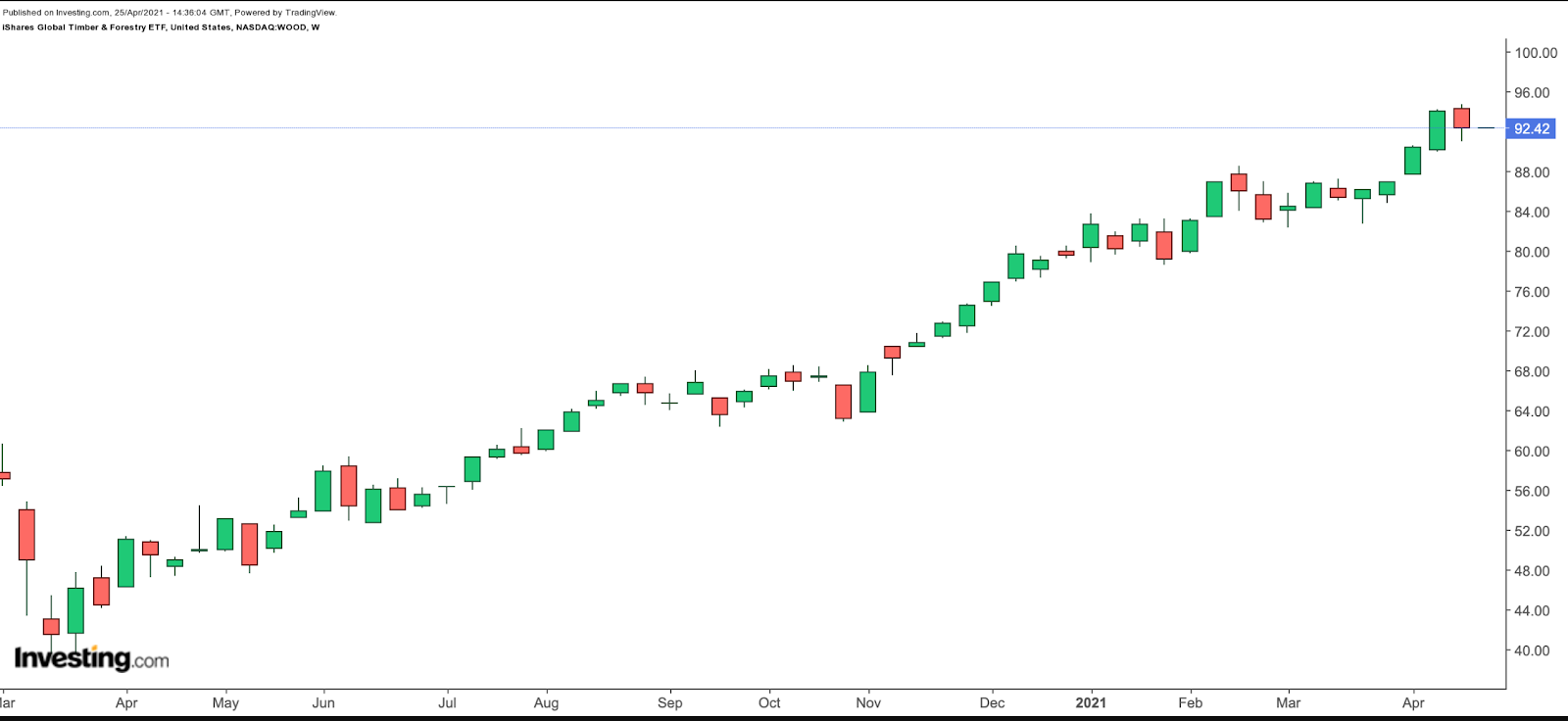Lumber—a key homebuilding material—has become one of the hottest commodities of the past year as the price of the structural material has reached record highs. In March 2020, lumber futures were around $250 per 1,000 board feet. Since then, they have gone over $1,370, an increase of more than 448%.
The price action in lumber typically has a direct effect on housing markets. For example, the US National Association of Home Builders (NAHB) suggests:
"This price spike has caused the price of an average new single-family home to increase by more than $24,000."
According to recent numbers, "Garage doors are up 11%. Insulation is up 25%. The lead time for windows has gone from three weeks to 16 weeks... [F]or every $1,000 price increase, nationwide, more than 150,000 potential buyers are being priced out of the market.”
The primary catalyst behind the spectacular increase in lumber prices has been the rising demand from home renovation projects, mainly due to the stay-at-home lifestyle, and the red-hot housing market. Optimistic purchasers have been taking advantage of low interest rates.
There have also been supply disruptions, mainly due to mill closures because of the pandemic. In the early days of COVID-19 "some mills cut production, dropping supply by up to 30%. But right about then, demand took off." Lumber yards have also been experiencing worker shortages. Delays in logistics (such as trucking) have added to the issues on the supply-side of the equation.
At present, "The U.S. production of lumber also cannot keep up with demand in a typical year. The U.S. imports about 30% of its lumber supply from Canada, which currently has a 10% tariff on those products." Various industry groups and several members of Congress are calling on the Biden administration to intervene.
Analysts now debate whether prices will continue to increase or instead fall. For instance, Capital Economics' Samuel Burman believes prices could decline considerably by the end of 2022. Other experts do not necessarily agree. Increased US infrastructure spending could potentially help support prices.
Therefore, today's article introduces an exchange-traded fund (ETF) that could appeal to investors who continue to be bullish on lumber.
We want to add a note on terminology, as some readers might wonder about the difference between lumber and timber. Despite several differences that wood experts could easily highlight, the distinction in daily use is primarily regional. What is lumber in the US and Canada is essentially timber in the UK, Australia, and New Zealand.
With that information, here’re is our fund for today.
iShares Global Timber & Forestry ETF
- Current Price: $92.42
- 52-Week Range: $47.67 - $94.80
- Dividend Yield: 0.85%
- Expense Ratio: 0.46%
The iShares Global Timber & Forestry ETF (NASDAQ:WOOD) invests in global timber and forestry businesses. These firms produce forest products, agricultural products as well as paper and packaging products. The fund started trading in June 2008 and net assets stand at $403.3 million. An average of about 65,000 shares are traded each day, 
WOOD, which has 25 holdings, tracks the S&P Global Timber & Forestry Index. About 35% of the companies come from the US, followed by Sweden (14.87%), Canada (14.31%), Japan (9.97%), Finland (9.50%), and Brazil (7.0%). In terms of sectoral allocation, Paper and Forest products have the highest slice (53.11%), followed by equity real estate investment trusts, REITs, (24.11), and Containers & Packaging (18.73%).
The leading 10 stocks make up around 58% of the fund. Among the top names in the roster are Canadian West Fraser Timber (NYSE:WFG), which produces lumber and other wood products, timberland real estate investment trust Rayonier (NYSE:RYN), whose assets are in timber growing regions stateside and New Zealand, Weyerhaeuser (NYSE:WY), which owns or manages timberlands in the US and Canada, and Sweden-based forest owner Svenska Cellulosa (ST:SCAb) (OTC:SVCBY).
In the past 12 months, the fund returned 90% and hit a record-high in April. Those investors who follow technical charts will notice that momentum oscillators and relative strength indicators are extremely overbought.
Although they could potentially stay so longer, short-term profit-taking could easily be around the corner. Interested investors who expect prices to go higher in the long-term could regard a decline toward the $87.5 level as a better entry point.
